From pasta to pudding, you’re spoiled for choice in the Eternal City. Here’s our guide to traditional food in Rome.
Italian food is very regional and every city has dishes which are peculiar to it. Knowing which dishes to look out for when visiting a city is, therefore, of the utmost importance since they will be better there than anywhere else.
And when visiting Rome, there is a huge number of dishes to choose from. These are seven of the dishes that you should look out for if you want to eat traditional food in Rome.
We’ve divided the list in the style of an Italian restaurant menu, into antipasti (starters), primi piatti (pasta or rice dishes), secondi piatti (main courses) and dolci (desserts).
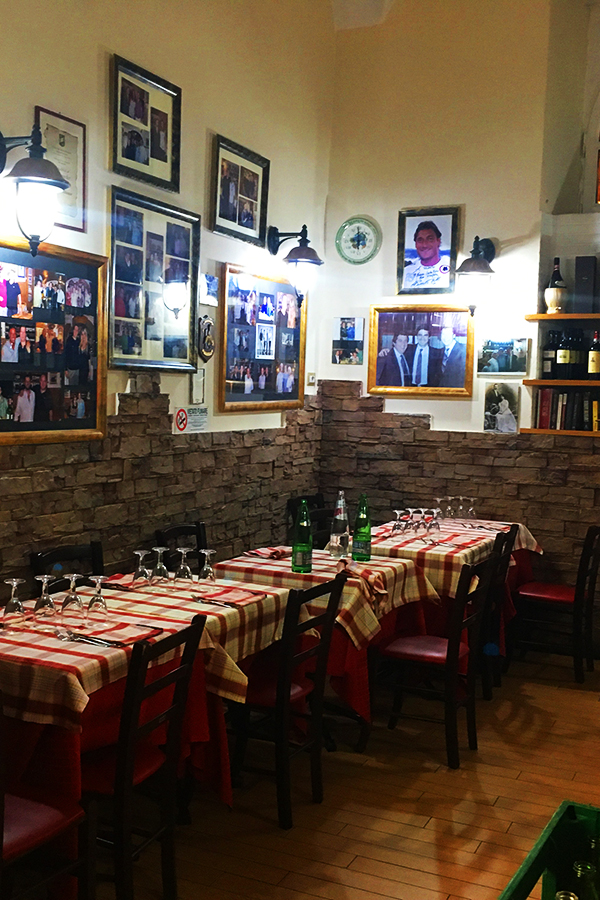
Photo credit: @lucamarchiorii, Text overlay: Devour Rome Food Tours
Antipasti
1. Filetti di baccalà fritta
Baccalà is the Italian word for salt cod, imported from the north Atlantic, and considered a delicacy. In Rome, you can find it deep fried in a crispy batter. It is served as a starter in many restaurants as well as a street food, so look out for it on menus. It represents a delicious start to any meal.
Where to get it: Piperno serves baccalà fritta along with a whole host of other delicious fried appetizers.
Primi piatti
2. Carbonara
Pasta alla Carbonara is one of the most famous but misunderstood Italian dishes in the world.
It consists of pasta served in a sauce with crispy guanciale (cured pork cheeks), tangy pecorino Romano cheese and eggs. The famous creamy consistency is achieved through the mixing of the eggs and cheese and under no circumstances should the dish contain cream.
Rome is considered the home of carbonara and once you’ve tasted it in the city, you’ll forget all the others you’ve ever had.
Where to get it: Arcangelo is reputed to serve one of the best carbonara in Rome. Who are we to argue?
RELATED: Best-Ever Traditional Roman Carbonara Recipe
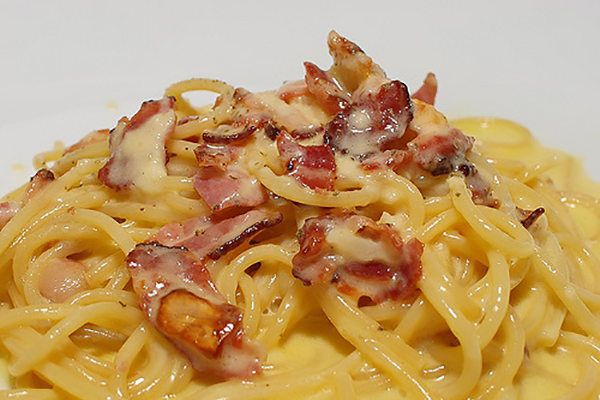
3. Gricia
Pasta alla Gricia is basically carbonara without the eggs. Or rather, carbonara is gricia with eggs, because this recipe can trace its origins back to ancient times whereas carbonara is an upstart, born in the dolce vita era of the 1950s. A great chef will produce a gricia which is no less creamy than a carbonara. We have no idea why this dish is not so well-known abroad. Perhaps the Romans are trying to keep it secret to have it all to themselves.
Where to get it: Lo Scopettaro (Lungotevere Testaccio, 7) a traditional osteria which opened more than 80 years ago in an old broom shop.
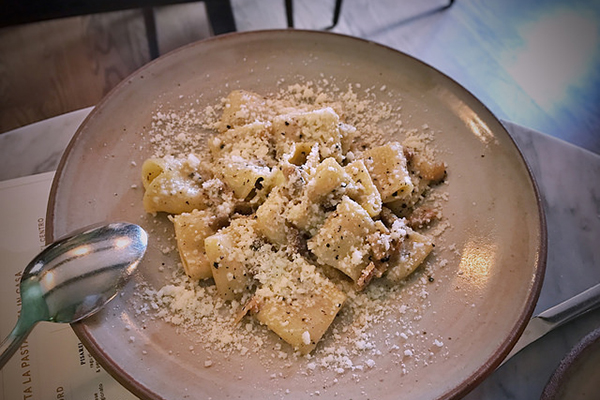
4. Amatriciana
Pasta all’Amatriciana is literally gricia with tomatoes, as this is how the dish developed (in fact gricia is sometimes called amatriciana bianca—white amatriciana). It was developed when the tomato became an integral part of Italian cooking in the early nineteenth century. Named for the town of Amatrice, famous for the quality of its guanciale, it’s now considered a Roman specialty.
Where to get it: Da Velavedodetto (Via di Monte Testaccio, 97) serves a wonderful amatriciana that you have to try. To paraphrase the name of the restaurant, ‘we told you so!’
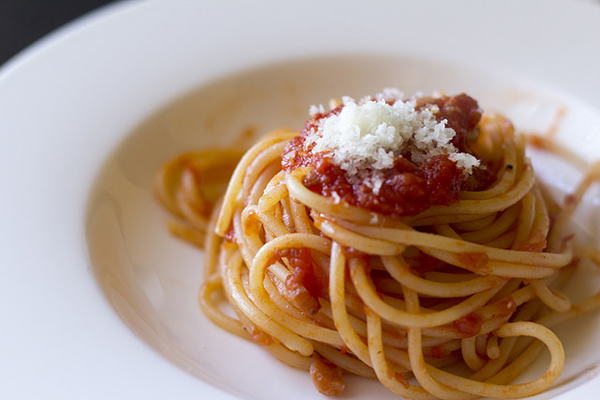
5. Cacio e pepe
Cacio e pepe means cheese and pepper and that’s exactly what this dish is: pasta served with a creamy pecorino and spicy black pepper sauce. It’s a dish which is notoriously difficult to prepare at home as the cheese can turn rubbery if you don’t understand the process. So let one of Rome’s myriad professional chefs prepare it for you.
Where to get it: Felice (Via Mastro Giorgio, 29) has been serving cacio e pepe and other traditional food in Rome since 1936. Order cacio e pepe and see it mixed in front of you for a moment of true Roman drama.
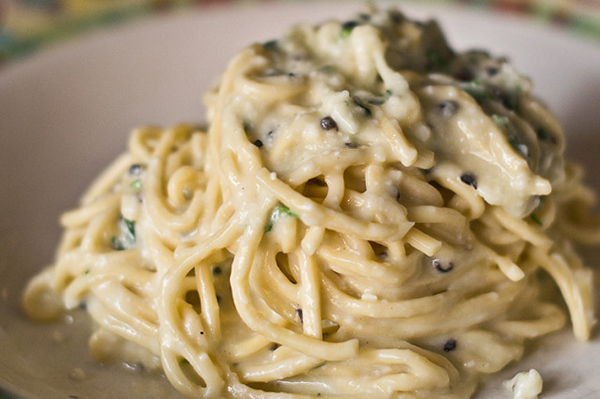
6. Coda alla vaccinara
This oxtail stew belongs to the Roman tradition of eating offal, known as the quinto quarto (fifth quarter). There is no doubt, however, that it is one of the most delicious offerings of traditional food in Rome. It originated in the Rione Regola on the right bank of the river Tiber whose inhabitants became known as mangiacode (tail eaters). The oxtail is cooked in tomatoes and wine, with cloves, black pepper, pine nuts, raisins, and even chocolate.
Where to get it: Agustarello a Testaccio (Via Giovanni Branca, 100) situated in the now trendy Testaccio district, is a great place to eat coda alla vaccinara.
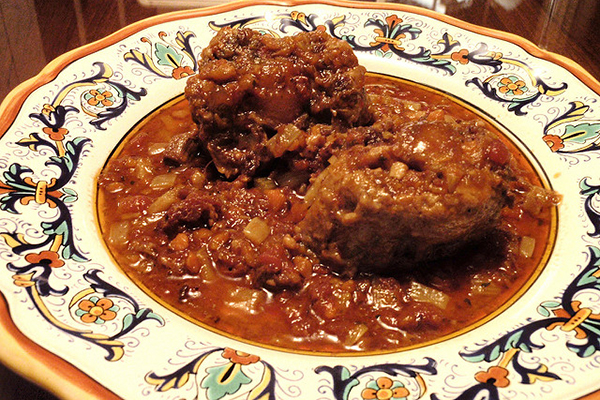
Dolci
7. Tirasmisù
Tirasmisù is not a Roman dish, in fact it comes from the Veneto in the north of Italy. However in recent years it has become adopted as traditional food in Rome. We’re sure it needs no introduction, but just in case, it consists of sponge fingers soaked in coffee and marsala wine, layered with sweetened mascarpone mixes with eggs, and topped with chocolate powder. Some adventurous chefs have developed versions with other flavors which you might see on a menu too.
Where to get it: Pompi (Via della Croce, 82) specializes in tirasmisù and has several locations around Rome. Perhaps the most atmospheric is near the Piazza di Spagna.
RELATED: Perfect Italian Tiramisu Recipe
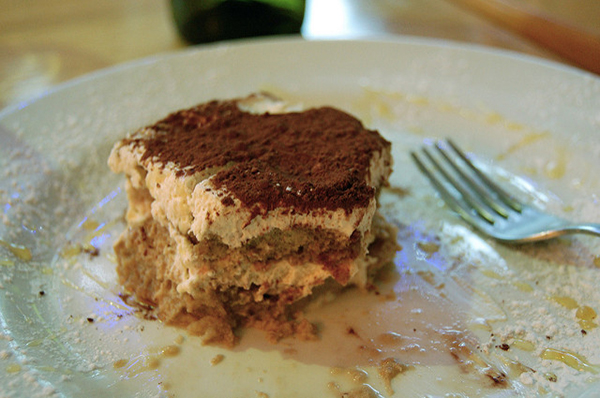
Enjoy street food like a local on our Rome Street Food and History Tour! Discover how Romans have devoured street food for centuries as you sample on-the-go bites, including supplì, fried fish, pizza, and more.
That’s a great list. But maybe you should have made it 9 items as Carciofi alla giudìa and Fettuccine Alfredo are two classic Roman dishes and ones that should not be eaten anywhere else.
Thanks for reading, Mitchell—great suggestions! We’re particularly fond of Roman artichokes—so much so that we wrote a whole article about them: https://devourromefoodtours.com/blog/artichokes-rome/